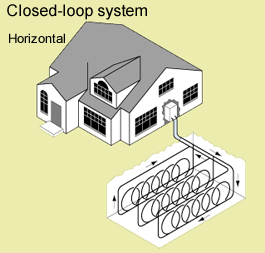Geothermal heat pumps are for heating and cooling
Although air temperatures above ground change throughout the day and with the seasons, temperatures of the earth 10 feet below ground are consistently between 50°F and 60°F. For most areas of the United States, this means soil temperatures are usually warmer than the air in winter and cooler than the air in summer. Geothermal heat pumps use the earth's constant temperature to heat and cool buildings. Geothermal heat pumps transfer heat from the ground (or water) into buildings during the winter and reverse the process in the summer.
Geothermal heat pumps are energy efficient and cost effective
According to the U.S. Environmental Protection Agency (EPA), geothermal heat pumps are the most energy-efficient, environmentally clean, and cost-effective systems for heating and cooling buildings. All types of buildings, including homes, office buildings, schools, and hospitals, can use geothermal heat pumps.
Last updated: December 27, 2022

